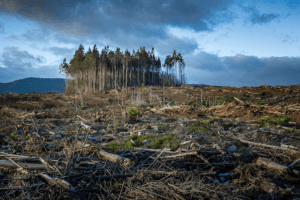Introduction
India, known for its rich and diverse flora and fauna, is facing a significant threat from deforestation. As one of the world’s fastest-growing economies, India is grappling with balancing development and environmental conservation. The rate at which forests are being cleared for agriculture, urbanization, and industrialization is alarming. This blog explores the causes of deforestation in India, its impact on biodiversity, and the steps being taken to mitigate this environmental crisis.
Causes of Deforestation in India
1. Agricultural Expansion
The demand for arable land to feed the growing population has led to the conversion of forested areas into agricultural fields. Shifting cultivation, also known as slash-and-burn agriculture, is a major contributor to deforestation in northeastern India.
2. Urbanization and Infrastructure Development
Rapid urbanization and infrastructure projects, such as road construction, mining, and dam building, require large tracts of forest land. The expansion of cities and towns encroaches upon forests, leading to habitat destruction.
3. Logging and Timber Extraction
Illegal logging and timber extraction for commercial purposes have significantly depleted forest cover. The demand for wood for construction, furniture, and fuelwood is high, especially in rural areas.
4. Industrialization
Industrial activities, including mining and quarrying, result in large-scale deforestation. The extraction of minerals and other resources from forest areas leads to the degradation of ecosystems.
Impact on Biodiversity
Deforestation has far-reaching consequences on biodiversity, affecting both plant and animal species.
1. Habitat Loss
Forests are home to numerous species of plants, animals, and microorganisms. The destruction of forests leads to the loss of habitats, making it difficult for species to survive. Many species are forced to migrate, and some face extinction due to the lack of suitable habitats.
2. Fragmentation
Deforestation often leads to the fragmentation of forests, dividing them into smaller, isolated patches. This fragmentation disrupts the natural habitat of species, affecting their movement, breeding, and feeding patterns. It also makes species more vulnerable to predators and environmental changes.
3. Loss of Plant Species
Forests are a repository of diverse plant species, many of which have medicinal properties and are used in traditional medicine. Deforestation results in the loss of these valuable plants, affecting local communities and their traditional knowledge systems.
4. Threat to Endangered Species
India is home to several endangered and endemic species, such as the Bengal tiger, Indian rhinoceros, and Asian elephant. Deforestation threatens these species by reducing their habitats and food sources, pushing them closer to extinction.
5. Impact on Ecosystem Services
Forests provide essential ecosystem services, including carbon sequestration, water regulation, soil conservation, and climate stabilization. The loss of forests disrupts these services, leading to increased carbon emissions, soil erosion, and changes in local climate patterns.

Mitigation Measures
Addressing deforestation and its impact on biodiversity requires concerted efforts from the government, NGOs, and local communities. Some of the measures being taken include:
1. Afforestation and Reforestation
Initiatives to plant trees and restore degraded forests are crucial. Programs like the Green India Mission aim to increase forest cover and improve the quality of existing forests.
2. Protected Areas and Wildlife Sanctuaries
Establishing protected areas, national parks, and wildlife sanctuaries helps conserve critical habitats and protect endangered species. The government is working to expand and effectively manage these protected areas.
3. Sustainable Land Use Practices
Promoting sustainable agriculture, agroforestry, and eco-friendly farming practices can reduce the pressure on forests. Encouraging the use of alternative sources of fuel, such as biogas and solar energy, can reduce the dependence on wood for fuel.
4. Legal and Policy Framework
Strengthening the legal and policy framework to prevent illegal logging and encroachment of forest land is essential. The Forest Conservation Act and the Wildlife Protection Act are some of the key legislations aimed at protecting forests and wildlife.
5. Community Participation
Involving local communities in forest conservation efforts is vital. Community-led initiatives, such as joint forest management and eco-tourism, can provide livelihoods while promoting conservation.
Conclusion
Deforestation poses a significant threat to India’s biodiversity, with long-term implications for the environment and human well-being. It is imperative to adopt sustainable practices, enforce stringent regulations, and foster community involvement to protect and restore India’s forests. By doing so, we can ensure the preservation of our rich biodiversity for future generations.
For more information, contact us www.mahabal.com
How to get started
If you would like to get a biodiversity impact assessment and deforestation studies audit done, write to us at enquiry.meepl@gmail.com or contact us
